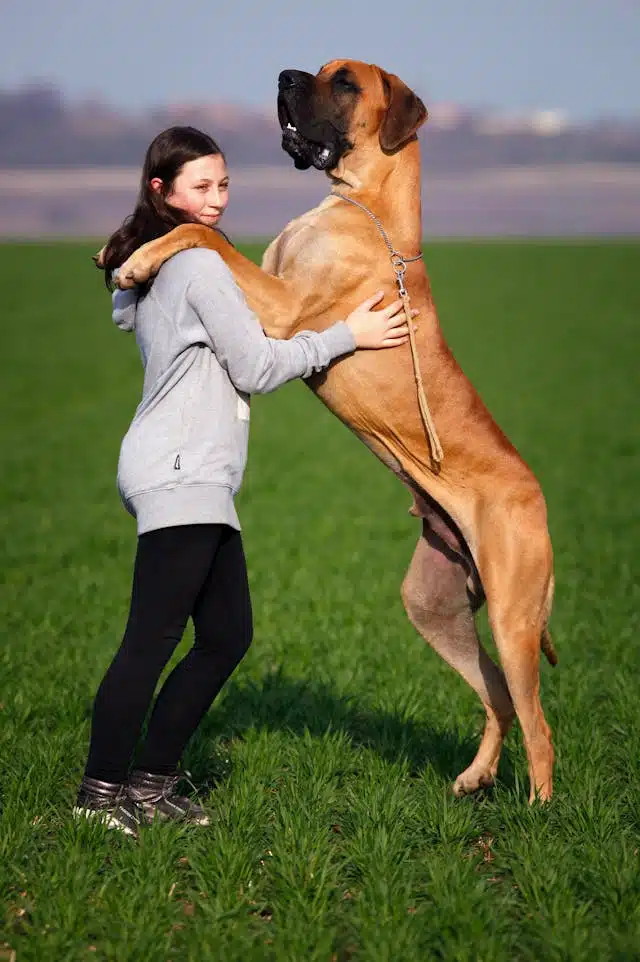When do dogs stop growing? It’s a common question among puppy owners, also did you know it’s just a myth that the size of your dog’s ears or paws can tell you how big they’ll get? Many puppy owners ask, “When will my dog stop growing? How big will they be?” There are lots of things that affect how fast a dog grows. It makes sense to wonder about their size, especially when you’re buying things like a new crate or bed. If you’re curious too, don’t worry—you’re not alone. Let’s explore this together and find out what to expect from your furry friend.
Table of Contents
ToggleBreed & Genetics: Predicting When Do Dogs Stop Growing
Usually, your dog’s breed & genetics are super important for figuring out when they’ll stop growing. If you have a purebred pup, you can look at their parents or see other dogs in their breed to guess how big they’ll be. When it comes to mixed breeds, predicting size is trickier. It’s kind of like picking a surprise from a box of chocolates—you never know what’s inside! Male dogs often end up being bigger & heavier than females in the same breed. Still, there are always exceptions.
Diet:

Diet is another big factor in how fast pups grow. If a puppy is sick or not getting enough nutrition, it might not grow well. On the flip side, puppies that eat too much could grow too fast. This can lead to problems like obesity & joint issues, especially in larger breeds. Also, when you spay or neuter your dog, it can affect their growth because hormones play a role in how growth plates close. So keeping your puppy strong & healthy is super important for healthy growth.
Parasites & Illnesses
Parasites or illnesses can take away important nutrients from your puppy that they need to grow well. Remember, dogs don’t grow at the same speed all their lives. There isn’t a simple formula that tells you when they’ll stop growing.
Growth Rate of Dogs By Size




Typically, larger breeds take longer to develop their bones and joints. Typically, toy and small breed dogs like Chihuahuas, Maltese, or Dachshunds will reach their full size between eight and 12 months. It is possible for some to reach full growth as early as six months. A small or toy breed dog weighs less than 20 pounds as an adult, and their height usually ranges from 12 to 18 inches.
Typically, medium-sized dogs weigh between 25 and 50 pounds as adults. There will be Beagles, Bulldogs, Miniature Schnauzers, and Basset Hounds in this group. Lastly, we have large breed dogs like Goldens, Labs, or German Shepherds. Dogs of this breed weigh over 50 pounds and can reach 30 inches tall. The longest growing dog breeds are giants like Bernese Mountain dogs and Great Danes. These dogs’ growth plates won’t close until they are around two years old. At full growth, these dogs are over 100 pounds and may be up to 44 inches in height.
Extra Tools to Estimate Size

You can also use tools like growth charts or even DNA tests to guess how big your dog may become! One way to estimate their adult weight is by taking the current weight (in pounds), dividing it by their age (in weeks), and then multiplying by 52. For instance, if your puppy weighs five pounds at ten weeks old, they might weigh around 26 pounds once fully grown. Just keep in mind this is an estimate—other things matter too!
Ways To Support Your Growing Dog

As a pet parent, there are certain things you can do to support your dog as they’re growing. The first thing you need to do is make sure that you’re feeding your dog a diet that’s totally balanced for his breed and age. Especially for large breed dogs, you should check the statement that says it’s AAFCO-approved specifically for large breed dogs. These large breed formulas will especially have a different calcium-to-phosphorus ratio between (1.1:1 and 1.4:1) to ensure proper growth. While exercise is important for dogs of all ages, you want to be especially cautious with puppies not to overexert them before their growth plates close.
Puppy exercise is best accomplished through short periods of playtime or even by exploring the backyard. As a general rule, puppies should not be exercising more than five minutes per month of age two times a day. So for example, a five-month-old puppy shouldn’t receive more than 25 minutes of exercise twice a day. Making sure that you support your puppy as they grow will set them up for success so they can have a long and healthy life. When your puppy struggles with health problems during their critical growth period, it can have long-term consequences.



